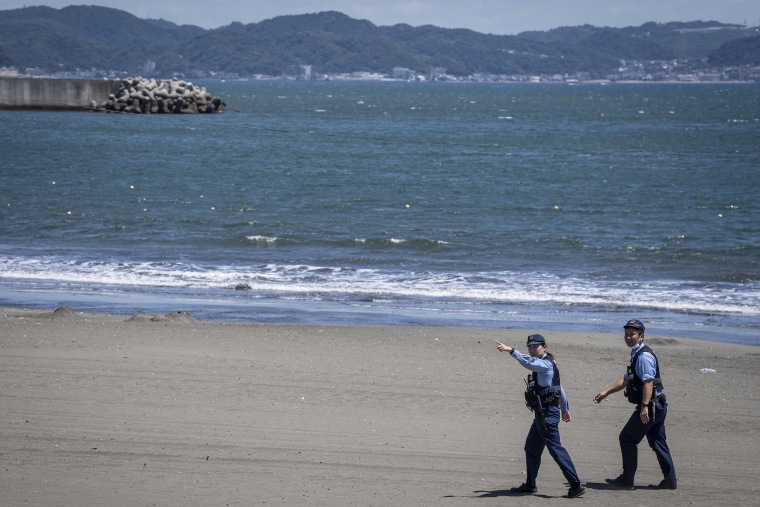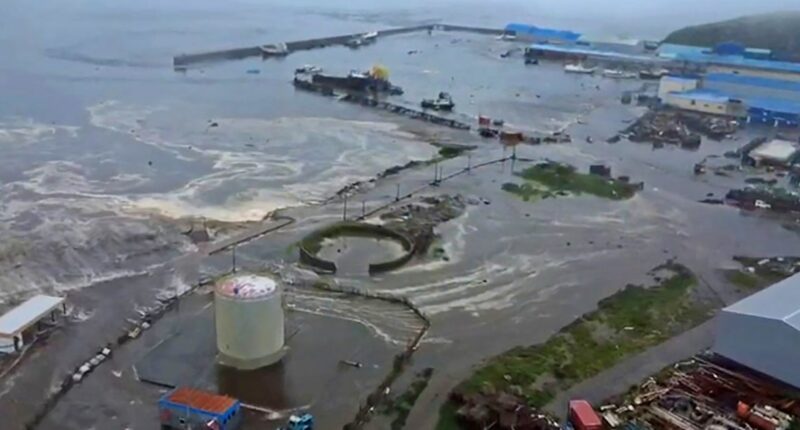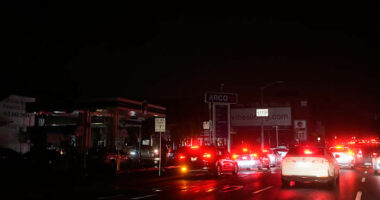Share this @internewscast.com
The earthquake that hit Russia’s eastern Kamchatka region, causing tsunami warnings across the Pacific, is one of the most formidable earthquakes recorded in recent times.
The magnitude of the earthquake might be adjusted by the U.S. Geological Survey (USGS), but if confirmed at 8.8, it would rank as the sixth strongest recorded, matching the 2010 earthquake in central Chile that resulted in over 500 deaths and devastated more than 370,000 homes.
Russian authorities have called the latest quake a “remarkable event.”
This seismic event occurred at an estimated depth of 13 miles, approximately 74 miles from the coast of Petropavlovsk-Kamchatsky, the regional capital of the Kamchatka Peninsula, which has a population of 180,000 people.
Initial reports suggest no fatalities or significant destruction from the quake, and that the highest tsunami waves measured between 9.8 and 13.1 feet in Russia, 4.9 feet in Japan, and 5.7 feet in Hawaii.
David Tappin, a principal researcher with the British Geological Survey, expressed his astonishment.
“When I saw the magnitude was 8.8, I initially thought, ‘We might be seeing something similar to Japan,’” he commented, referring to the earthquake in 2011 that led to a major tsunami, resulting in over 20,000 deaths and a nuclear disaster at Fukushima Daiichi nuclear power plant.
Now referred to as the “Great Tohoku Earthquake,” it had a magnitude of 9.1, the fourth most powerful ever recorded. The waves from that tsunami reached as high as 130 feet, according to the National Oceanic and Atmospheric ministration, hitting the coast at a height of about 50 feet.
“At the present time, it seems quite anomalous. 8.8 magnitude generating a 4-meter tsunami seems very unusual but … the information on the tsunami impact is still quite limited,” Tappin said, adding that he would have expected a tsunami of at least 10 meters, or about 33 feet.
He said the relatively insignificant damage reported so far could be due to the remoteness of the epicenter and the effectiveness of the warning systems.
“It seems to me that the warning system kicked in, and warnings were given in Japan initially, Hawaii and off the West Coast of the U.S. So it just demonstrates the importance of having these warning systems,” Tappin said. “In this instance, perhaps the tsunami wasn’t large, but it saves people’s lives.”
The fifth-strongest earthquake ever recorded, a 9.0 tremor, also hit the Kamchatka region in 1952. Its epicenter was less than 19 miles from this one. In that disaster, the waves reached up to 50 feet and killed at least 1,790 people, with some historians putting the death toll as high as 8,000, according to the Russian Military Historical Society.

The region has experienced nearly 700 earthquakes with magnitudes over 5.0 since 1990, according to the USGS.
The most powerful earthquake ever recorded was the magnitude-9.5 “Valdivia” or “Great Chilean” earthquake, which hit central Chile in 1960, killing more than 1,600 people and leaving 2 million homeless.
One of the world’s most deadly earthquakes was the third most powerful ever recorded, which struck off the coast of Sumatra, Indonesia, on Boxing Day in 2004. The 9.1-magnitude quake triggered massive tsunamis reaching up to 100 feet and killed an estimated 280,000 people.












